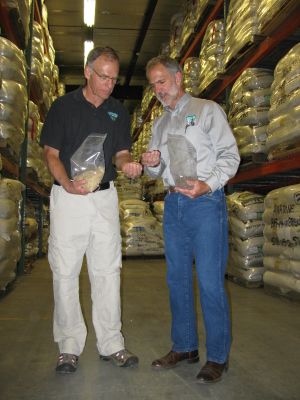New national seed strategy aims to make burned lands more resilient
Even as fires ravage landscapes across the west, restoration crews already are on the ground amid the smoke, starting work on plans to reseed and rehabilitate the burned wildlands. “There’s an urgent need,” said Tim Murphy, Idaho state director of the U.S. Bureau of Land Management.
That need has prompted an array of federal and state agencies to partner with hundreds of groups, from commercial seed producers to garden clubs, research universities to ranchers, to launch a new “National Seed Strategy for Rehabilitation and Restoration” today, aimed at not only restoring burned landscapes across the west, but making them more resilient before the next fire hits.
“It goes beyond the Great Basin,” said Steve Ellis, deputy director of the BLM in Washington, D.C. “This is for the whole country. It can be applied in areas where we have lost natural vegetation from hurricanes and other natural disasters.” Ellis, who started his career as a forester 36 years ago in Idaho, flew over the giant Soda Fire in southern Idaho yesterday with fire and land management officials. “The conversation in the aircraft immediately went to rehabilitation,” he said. “We want to get on the ground even before the smoke clears.”
But it’s not as simple as just replanting. Invasive species, like cheatgrass and medusa head, move in after fires, and can choke out native plants. Scientists and seed producers are working on identifying just the right native seeds for the specific location, elevation and climate to plant in each location, and when the ideal window is for the native plants to grow instead of giving way to the invaders. “We’ve oftentimes had shortages of certain types of seed,” Ellis said. “You really have a window to get that seed in the ground.”
The new strategy is aimed at coordinating a nationwide network of native seed collectors, farmers and growers, nurseries, seed storage facilities and restoration ecologists. Officials gathered at a giant BLM seed storage warehouse in Boise on Monday to announce the strategy; the warehouse has nearly 800,000 pounds of precisely targeted native seed stacked to the ceiling in huge bags, ready to send out to specific fire locations. You can read my full story here at spokesman.com.

